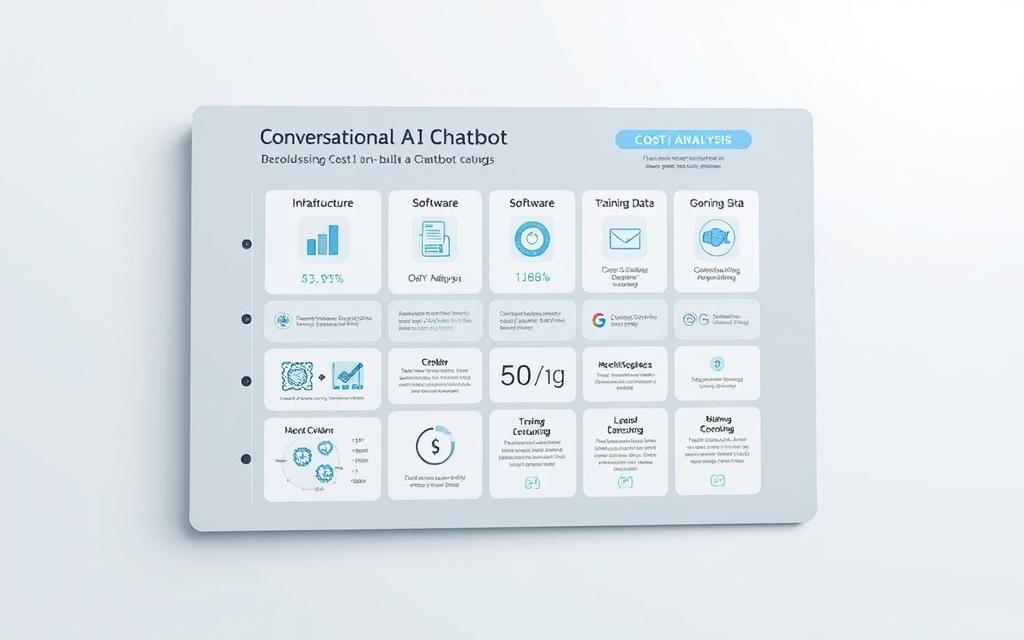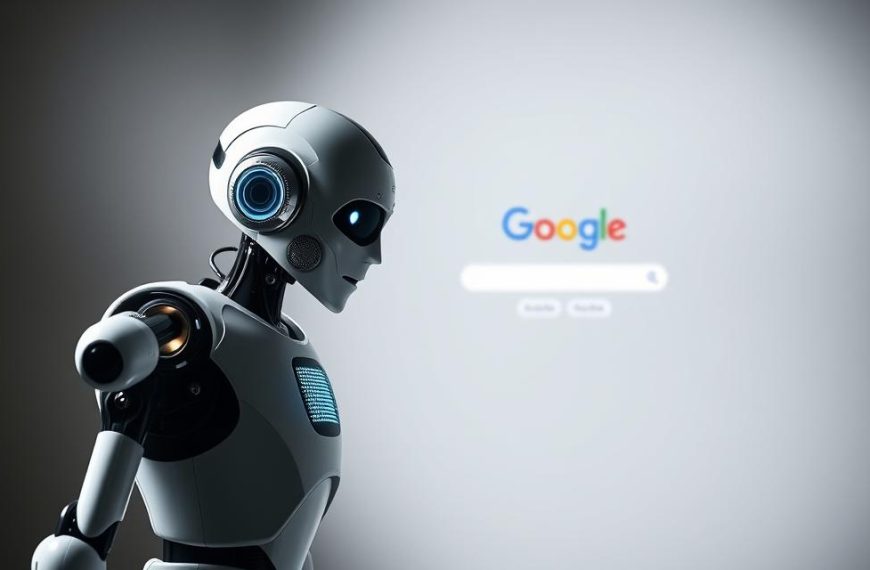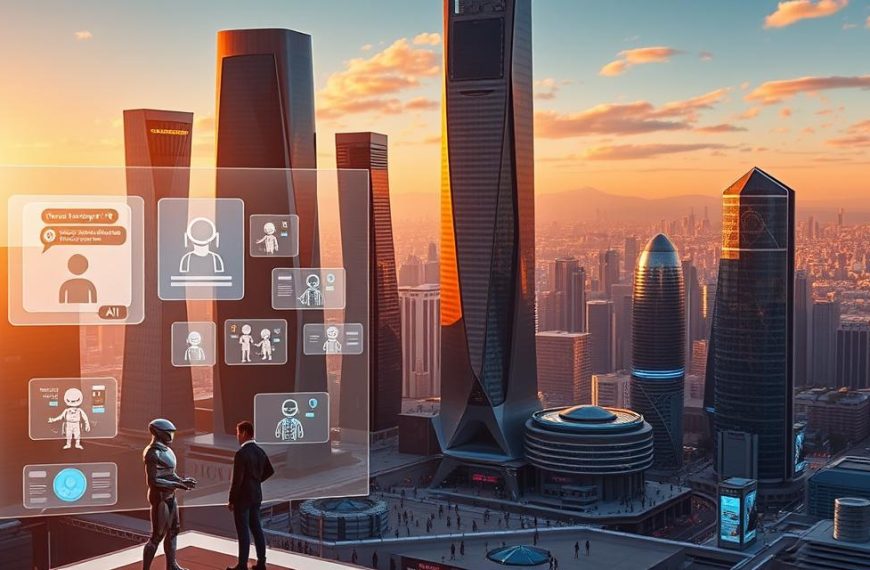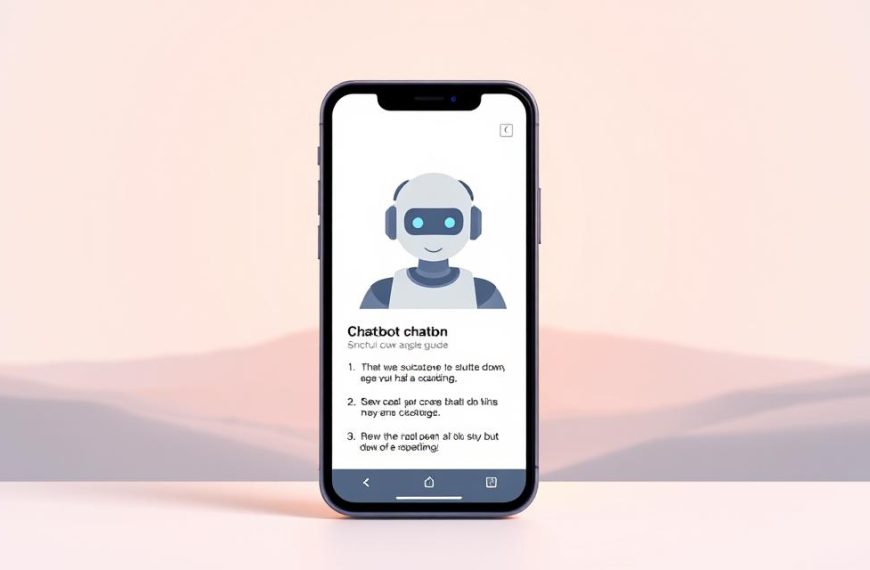Chatbots have become indispensable tools for modern businesses, serving as digital assistants that streamline customer interactions. With pricing ranging from under £100 monthly to custom solutions exceeding £50,000, understanding expenditure requires careful evaluation of organisational needs. This guide examines the financial landscape for companies considering automated communication systems.
Basic chatbots using pre-set rules often come with minimal fees, while AI-driven versions with natural language processing demand higher investments. Development complexity significantly impacts budgets – simple implementations suit small enterprises, whereas multinational corporations typically require tailored architectures.
Strategic planning proves vital when aligning chatbot capabilities with commercial objectives. Whether enhancing customer support or driving sales conversions, the chosen solution must balance functionality against operational requirements. UK businesses particularly benefit from platforms accommodating regional linguistic nuances and compliance standards.
Forward-thinking organisations view these systems as long-term assets rather than temporary fixes. Initial development costs form just one aspect – maintenance, updates, and integration with existing infrastructure contribute to the total investment. Subsequent sections explore cost breakdowns across different platforms and implementation scales.
Understanding Chatbot Pricing Models
Businesses navigating automated communication solutions face three distinct approaches to budgeting. Each model offers unique advantages depending on operational scale and strategic goals.
Subscription, Custom, or Pay-as-You-Go
Subscription-based platforms operate like digital toolkits, with monthly fees from free tiers to £5,000. These ready-made services suit companies prioritising speed over customisation. Setup often takes hours rather than weeks.
Custom-developed solutions range between £10,000-£50,000, offering complete brand alignment. This approach works for enterprises needing specialised workflows or niche industry compliance. Development timelines typically span 3-9 months.
Consumption models charge per interaction – £0.007 per text or £0.06 per audio minute. Seasonal businesses favour this flexible pay-as-you-go structure, avoiding fixed costs during quieter periods.
From Basic Scripts to AI Complexity
Early chatbots relied on rigid decision trees with predictable pricing. Modern AI-driven platforms adapt conversations dynamically, influencing cost structures. Technological democratisation now lets smaller firms access features once reserved for corporate budgets.
Market competition continues reshaping pricing options. While entry-level solutions become more affordable, premium services incorporate advanced analytics and multilingual support. Choosing the right model depends on balancing immediate needs with long-term scalability.
How Much Does It Cost to Create a Chatbot
Selecting the right financial model for automated communication tools requires understanding key pricing structures. Businesses must weigh immediate budgets against long-term operational needs, with options spanning predictable subscriptions to scalable pay-per-use systems.
Comparative Analysis of Different Cost Structures
| Model | Monthly Cost | Best For | Hidden Costs |
|---|---|---|---|
| Standard Subscription | £0-£100 | Startups | Feature upgrades |
| Enterprise Plans | £600-£5,000 | Large corporations | Staff training |
| In-House Development | £10,000+ | Tech-focused firms | Software licences |
| Outsourced Agency | £1,000-£5,000 | Medium businesses | API integrations |
Subscription services appeal through simplicity, but scaling often triggers unexpected charges. Free tiers typically limit user interactions, while premium packages add multilingual support and analytics dashboards. One e-commerce brand saw a 40% price jump when expanding to European markets.
Custom-built solutions involve deeper investments. Agency-developed chatbots average £3,000 monthly, including updates. However, bespoke systems adapt better to unique workflows than off-the-shelf alternatives.
Consumption-based models suit seasonal operations. A UK travel agency saved 28% annually using pay-per-request billing during off-peak months. Yet high-volume users risk overspending without usage caps.
Subscription-Based Chatbot Plans
Modern businesses increasingly adopt subscription models for chatbot tools, balancing scalability with predictable budgeting. These services range from entry-level free tiers to comprehensive enterprise packages, each addressing specific operational needs.
Free and Freemium Options
Platforms like Tidio and Chatfuel provide basic chatbot software at no cost, ideal for startups testing automated communication. Features typically include:
- Pre-built response templates
- Limited conversation volumes
- Basic customer segmentation
Freemium models allow gradual upgrades as requirements evolve. However, custom branding and third-party integrations often remain locked behind paywalls.
Premium Features and Enterprise Solutions
Mid-tier subscriptions (£15-£500/month) introduce AI-driven dialogue management and multi-channel deployment. Providers like ManyChat offer:
- Natural language processing
- Advanced analytics dashboards
- CRM system integrations
Enterprise plans (£600-£5,000/month) cater to multinational operations with features like real-time payment processing and dedicated support teams. These solutions prioritise security compliance and complex workflow automation for sectors like finance or healthcare.
Custom Chatbot Development Solutions
Organisations face strategic decisions when implementing tailored automated communication systems. Building bespoke solutions demands careful evaluation of resource allocation, technical expertise, and long-term operational requirements.
In-House Versus Outsourced Development
Maintaining an internal development team involves substantial commitments. Annual costs average £130,000 when accounting for:
- Designers (£38,000-£91,000)
- Developers (£45,000-£112,000)
- Data scientists (£78,000-£205,000)
External partnerships offer flexible alternatives. Specialist agencies typically charge £1,000-£5,000 monthly for maintenance, with initial projects ranging £10,000-£50,000. This model transfers infrastructure costs while ensuring access to cutting-edge skills.
| Factor | In-House | Agency |
|---|---|---|
| Cost Range | £130k+ annually | £10k-£50k project |
| Team Requirements | Full-time specialists | Dedicated account manager |
| Timeline | 6-18 months setup | 3-9 months delivery |
| Flexibility | Complete control | Scalable resources |
“Hybrid models combining internal oversight with external execution often yield optimal results for mid-sized enterprises.”
Time management proves critical in both approaches. In-house teams enable rapid iterations post-launch, while agencies reduce initial development burdens. Regular skills assessments ensure alignment with evolving conversational AI standards.
Businesses must weigh these options against specific operational needs. Financial services firms often prioritise in-house data security, whereas retail brands frequently benefit from agency-led rapid deployment cycles.
Consumption-Based Pricing Explained
Flexible billing models revolutionise how organisations manage chatbot expenses. Unlike fixed subscriptions, these systems charge per interaction – £0.007 for text exchanges and £0.06 per audio minute. This approach mirrors utility billing, where costs directly reflect user engagement levels.
Seasonal enterprises benefit significantly from this structure. Holiday retailers or event ticketing services avoid idle costs during off-peak months. One UK tour operator reduced annual expenditure by 34% after switching to pay-per-use models during winter closures.
Risks emerge during unexpected demand surges. Viral marketing campaigns or system outages might trigger exponential cost spikes. Implementing usage caps and real-time data monitoring helps maintain budgetary control. Some platforms offer hybrid models combining base fees with tiered overage rates.
Advanced bot platforms now differentiate billing for complex interactions. Natural language processing requests or multilingual responses may incur higher charges. Businesses should analyse historical user behaviour patterns to forecast potential expenses accurately.
“Consumption pricing demands proactive management but rewards agile businesses with lean cost structures.”
Integration with existing data systems remains crucial. APIs that track conversation metrics enable precise cost allocation across departments. This granular visibility supports informed decisions about scaling chatbot capabilities in alignment with commercial objectives.
Factors Impacting Chatbot Development Cost
Understanding cost variations in automated assistants requires examining core technical and operational elements. Three primary factors dictate expenditure: system sophistication, compatibility demands, and deployment scope.
Complexity and Feature Functionality
Basic chatbots handling FAQs cost 60-80% less than AI-driven systems. Rule-based tools follow scripted pathways, while natural language processing enables dynamic conversations. Advanced functionality like sentiment analysis or voice recognition escalates development time and resource allocation.
| Feature Tier | Development Hours | Typical Cost Range |
|---|---|---|
| Basic Scripting | 20-50 hours | £800-£2,000 |
| AI Conversational | 150-300 hours | £6,000-£12,000 |
| Enterprise NLP | 400+ hours | £16,000-£50,000 |
Integrations and Platform Requirements
Connecting to existing systems accounts for 30-45% of development budgets. CRM integrations like Salesforce or HubSpot demand custom APIs, while payment gateways require PCI compliance checks. Multi-platform deployment across WhatsApp, Messenger, and Slack triples testing phases.
Ongoing expenses emerge from:
- Monthly API usage fees
- Cross-platform update cycles
- Security certification renewals
| Integration Type | Average Setup Cost | Annual Maintenance |
|---|---|---|
| CRM Systems | £1,200-£4,500 | £300-£900 |
| Payment Processors | £2,800-£6,000 | £450-£1,200 |
| Inventory Management | £900-£3,000 | £180-£600 |
Chatbot Development Cost Breakdown
Financial planning for automated communication tools demands careful evaluation of payment structures. Businesses must weigh recurring operational expenses against substantial upfront commitments to determine optimal value.
Monthly Subscriptions Versus One-Off Investments
Subscription models offer immediate accessibility with monthly fees from £0-£5,000. Entry-level plans suit startups testing basic functionality, while enterprise tiers provide advanced language processing and compliance features. These services minimise initial outlay but accumulate over time.
Custom-built solutions require £10,000-£50,000 upfront, plus 15-20% annual maintenance fees. While costly initially, bespoke systems align precisely with complex workflows. A UK fintech firm reported 68% higher efficiency after transitioning from subscription tools to tailored architecture.
Hidden expenditures impact both models:
- Staff training programmes (£800-£2,500 annually)
- Third-party API integration fees
- Content updates for seasonal campaigns
| Model | Upfront Cost | 3-Year Total |
|---|---|---|
| Premium Subscription | £0 | £21,600-£180,000 |
| Custom Development | £30,000 | £34,500-£42,000 |
“Subscription services work for standard operations, but businesses requiring unique data handling should consider custom builds despite higher initial costs.”
Scalability proves critical in model selection. Subscription tiers adapt easily to user growth, while custom solutions might require additional development for expansion. Regular performance audits help optimise ongoing investments across both approaches.
Evaluating Chatbot Tools and Services
Practical evaluation frameworks help businesses identify solutions that align with operational priorities. Real-world applications demonstrate how strategic chatbot deployment drives measurable improvements in efficiency and customer experience.
Case Studies and Real-World ROI
Ontop Legal Services reduced response times from 20 minutes to 20 seconds using an AI-powered system. The tool handles 100+ complex queries weekly, saving 130 staff hours monthly. This allowed reallocating resources to high-value client consultations.
Key performance metrics reveal broader trends:
| Industry | Cost Saving | Customer Satisfaction Increase |
|---|---|---|
| E-commerce | 28% | 22% |
| Healthcare | 19% | 34% |
| Education | 31% | 27% |
Forty per cent of UK consumers now prefer automated services for routine tasks like order tracking. Platforms offering seamless CRM integrations prove particularly effective for scaling customer service operations.
“Our chatbot investment paid for itself within seven months through reduced staffing costs and improved conversion rates.”
When comparing chatbot tools, prioritise platforms with multilingual support and real-time analytics. Regular audits of resolution rates and user feedback ensure continuous optimisation of business outcomes.
Optimising Your Investment in Chatbots
Strategic deployment of automated solutions demands alignment between technological capabilities and commercial priorities. Businesses achieve optimal returns by matching customisation levels to core operational requirements rather than chasing unnecessary features.
Balancing Features with Budget
A hospitality group saved £12,000 annually by replacing 60 agent hours/month with a £29 chatbot. This 97% cost reduction highlights the importance of prioritising business needs over technical complexity during initial implementation phases.
Phased rollouts allow gradual feature expansion as ROI materialises. Start with handling repetitive queries, then integrate payment processing or multilingual support. Regular performance reviews ensure content updates and workflow adjustments maintain relevance.
Seventy-eight per cent of UK companies report improved customer experience when chatbots address specific pain points. Focus investments on functionalities that directly enhance service quality or operational efficiency rather than broad-spectrum capabilities.
Successful implementations balance upfront costs with long-term growth potential. By aligning automated tools with strategic objectives, businesses transform chatbots from expense items into profit-driving assets.




















